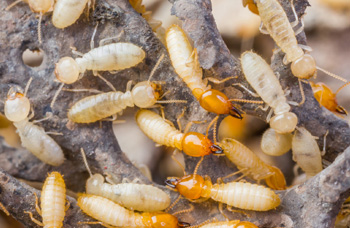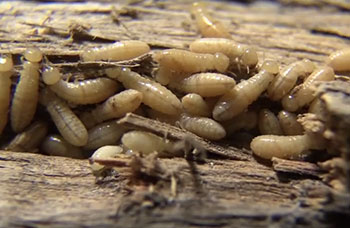Termite Types & Facts
Termite Facts
- Termites generally swarm in the spring. It is important to get an annual termite inspection to prevent costly damage.
- Termites also swarm in the late summer
- One colony can contain an average of 3 million members. There have been documented cases where 70 million termites have been found.
- Termite colonies are often larger (and more damaging) in a home infestation than in nature
How to Get Rid of Termites
Ridding a home of termites requires special skills and is a job for professionals. Knowledge of building construction is needed to identify the critical areas where termites are likely to enter. Many of these potential points of entry are hidden and difficult to access.
Termite control also utilizes specialized equipment such as masonry drills, pumps, large-capacity tanks, and soil treatment rods. A typical treatment may involve hundreds of gallons of a liquid pesticide, known as a termiticide, injected into the ground alongside the foundation, beneath concrete slabs, and within foundation walls. “Do-it-yourself” products, sold to homeowners at retail stores or bought over the internet, will seldom eradicate an existing termite problem. Termites feed slowly and taking a few weeks to come to a decision regarding your termite control program makes little difference. It is more important to take your time to select a reputable pest control firm.
Use of insecticides like borates (disodium octaborate tetrahydrate) and/or pressure-treated wood (chromated copper arsenate) protect against termites and wood decay fungi. However, over time, even railroad ties, telephone poles and pressure treated wood can be subject to termite attack.
There are a few things homeowners can do for prevention.
- Eliminate Moisture Problems:
- Avoid moisture accumulation near the foundation. Divert water away with properly maintained clean downspouts, gutters and splash blocks.
- Pull or grade the ground near the foundation in order for surface water to drain away from the building.
- Promptly repair leaking faucets, water pipes, and air conditioning units.
- Seal entry points around water and utility lines or pipes
- Provide proper ventilation in the basement or crawl space to eliminate moisture (e.g., enhance cross ventilation, screen and remove any vegetation covering vents, etc.)
- Remove Termite Food Sources:
- Keep all wooden parts of the house foundation at least 6 inches above the soil, although an 18-inch gap between the soil and wooden portions of the building is ideal. Use concrete or steel supports, steps, etc. when in contact with soil.
- Check decks and wooden fences regularly for damage. A minimum of 6 to 8 inches between ground level and porch steps, lattice work, door or window frames, etc. is recommended.
- Install trellises, vines, and trim plants so that they do not contact the house. Do not build flower planters against the house.
- Avoid or minimize use of wood mulch next to the foundation (no more than a 2-inch depth is recommended). When mulch is used, avoid contact against the wood siding or frames of doors and windows. Pea gravel or crushed stone are much less attractive to termites, ants, millipedes, crickets, etc.
- Remove dead trees, debris, stumps and roots, and stacks of firewood from around the building.
- Regularly inspect cracks or joints in concrete slabs for evidence of termites.
Additional Information
- What Are Termites?
- Termite Inspection
- Common Signs of Termite Infestation
- Termite Concerns for Florida Residents
- Termite Video Gallery

